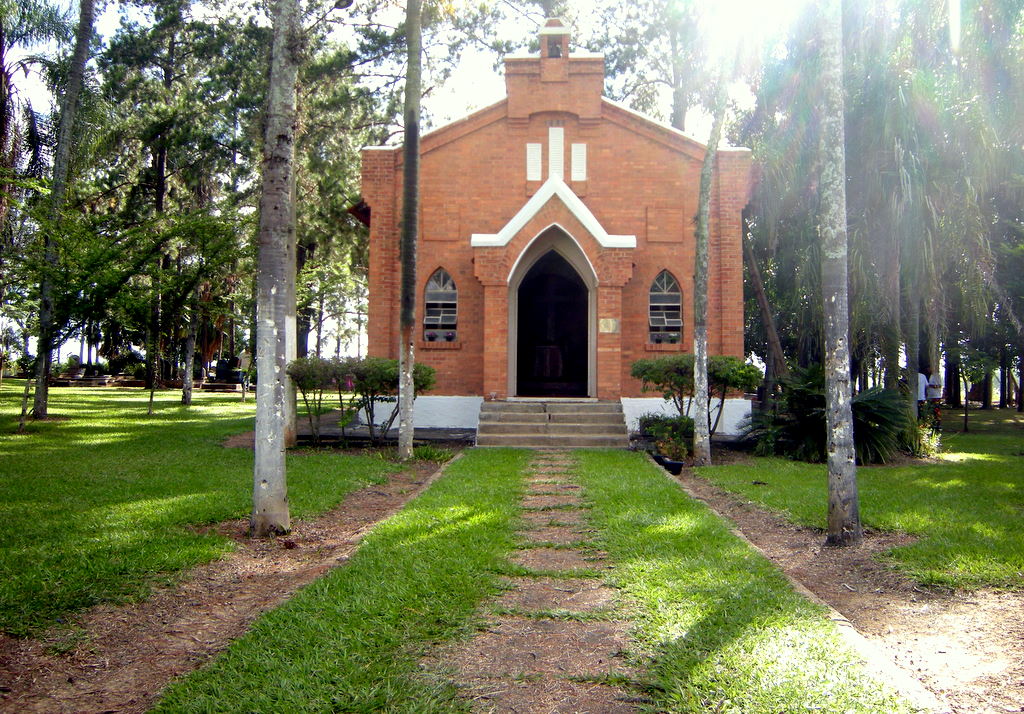|
Confederados
''Os Confederados'' () is the Brazilian name for Confederate expatriates who fled the Southern United States during Reconstruction and their Brazilian descendants. They were enticed to Brazil by offers of cheap land from Emperor Dom Pedro II, who had hoped to gain expertise in cotton farming. It is estimated that up to 20,000 American Confederates emigrated to the Empire of Brazil from the Southern United States after the American Civil War. Initially, most settled in the current state of São Paulo, where they founded the city of Americana, which was once part of the neighboring city of Santa Bárbara d'Oeste. The descendants of other ''Confederados'' would later be found throughout Brazil. The center of Confederado culture is the Campo Cemetery in Santa Bárbara d'Oeste, where most of the original Confederados from the region were buried. Because of their Protestant religion, they could not be buried in a Catholic cemetery, so they created their own cemetery, the first non- ... [...More Info...] [...Related Items...] OR: [Wikipedia] [Google] [Baidu] |
Santa Bárbara D'Oeste
Santa Bárbara d'Oeste is a Municipalities of Brazil, municipality in the São Paulo (state), State of São Paulo in Brazil. It is part of the Metropolitan Region of Campinas. It lies about northwest of the State capital. It occupies an area of , of which is urban. In 2020, the population was estimated at 194,390 by the Brazilian Institute of Geography and Statistics, making it the 43rd most populous city in São Paulo and the sixth largest in the metropolitan region of Campinas. Santa Bárbara d'Oeste has an annual average temperature of , and the original vegetation of the area predominates. The city has an urbanization rate of 98.73%. As of 2009, there were 44 medical institutions in the city, and its human development index (HDI) is rated as 0.819 in relation to the rest of the state. Founded on 4 December 1818, when the Church was built, the city was named in honor of its patron saint, Santa Barbara, it was originally part of Piracicaba. It separated from Piracicaba in 1900 ... [...More Info...] [...Related Items...] OR: [Wikipedia] [Google] [Baidu] |
American Brazilian
An American Brazilian ( pt, italic=yes, américo-brasileiro, norte-americano-brasileiro, estadunidense-brasileiro) is a Brazilian person who is fully, partially or predominantly of European-American descent or a U.S.-born immigrant in Brazil. The Confederados is a cultural sub-group in the nation of Brazil. They are the descendants of people who fled from the Confederate States of America to Brazil with their families after the American Civil War. At the end of the American Civil War in the 1860s, a migration of Confederates to Brazil began, with the total number of immigrants estimated in the thousands. They settled primarily in Southern and Southeastern Brazil: in Americana, Campinas, São Paulo, Santa Bárbara d'Oeste, Juquiá, New Texas, former Xiririca now Eldorado, Rio de Janeiro and Rio Doce. A few other places also received immigrants: one colony settled in Santarém, Pará – in the north on the Amazon River – and the states of Bahia and Pernambuco also received a ... [...More Info...] [...Related Items...] OR: [Wikipedia] [Google] [Baidu] |
Americana, São Paulo
Americana () is a municipality (''município'') located in the Brazilian States of Brazil, state of São Paulo (state), São Paulo. It is part of the Metropolitan Region of Campinas. The population is 229,322 (2015 est.) in an area of . The original settlement developed around the local railway station, founded in 1875, and the development of a cotton weaving factory in a nearby farm. After 1866, thousands of former Confederate States of America, Confederate sympathizers from the American Civil War settled in the region. Following the Civil War, slavery was abolished in the United States. In Brazil, however, Slavery in Brazil, slavery was legal until 1888, making it a particularly attractive location to former Confederates, among whom was a former member of the Alabama State Senate, William Hutchinson Norris. Around three hundred of the ''Confederados'' are members of the ''Fraternidade Descendência Americana'' (Fraternity of American Descendants). They meet quarterly at the Camp ... [...More Info...] [...Related Items...] OR: [Wikipedia] [Google] [Baidu] |
Confederate States Of America
The Confederate States of America (CSA), commonly referred to as the Confederate States or the Confederacy was an unrecognized breakaway republic in the Southern United States that existed from February 8, 1861, to May 9, 1865. The Confederacy comprised U.S. states that declared secession and warred against the United States during the American Civil War: South Carolina, Mississippi, Florida, Alabama, Georgia, Louisiana, Texas, Virginia, Arkansas, Tennessee, and North Carolina. Kentucky and Missouri also declared secession and had full representation in the Confederate Congress, though their territory was largely controlled by Union forces. The Confederacy was formed on February 8, 1861, by seven slave states: South Carolina, Mississippi, Florida, Alabama, Georgia, Louisiana, and Texas. All seven were in the Deep South region of the United States, whose economy was heavily dependent upon agriculture—particularly cotton—and a plantation system that relied upon enslaved ... [...More Info...] [...Related Items...] OR: [Wikipedia] [Google] [Baidu] |
New Orleans
New Orleans ( , ,New Orleans Merriam-Webster. ; french: La Nouvelle-Orléans , es, Nueva Orleans) is a Consolidated city-county, consolidated city-parish located along the Mississippi River in the southeastern region of the U.S. state of Louisiana. With a population of 383,997 according to the 2020 U.S. census, it is the List of municipalities in Louisiana, most populous city in Louisiana and the twelfth-most populous city in the southeastern United States. Serving as a List of ports in the United States, major port, New Orleans is considered an economic and commercial hub for the broader Gulf Coast of the United States, Gulf Coast region of the United States. New Orleans is world-renowned for its Music of New Orleans, distinctive music, Louisiana Creole cuisine, Creole cuisine, New Orleans English, uniq ... [...More Info...] [...Related Items...] OR: [Wikipedia] [Google] [Baidu] |
Chattel Slavery
Slavery and enslavement are both the state and the condition of being a slave—someone forbidden to quit one's service for an enslaver, and who is treated by the enslaver as property. Slavery typically involves slaves being made to perform some form of work while also having their location or residence dictated by the enslaver. Many historical cases of enslavement occurred as a result of breaking the law, becoming indebted, or suffering a military defeat; other forms of slavery were instituted along demographic lines such as Racism, race. Slaves may be kept in bondage for life or for a fixed period of time, after which they would be Manumission, granted freedom. Although slavery is usually involuntary and involves coercion, there are also cases where people voluntary slavery, voluntarily enter into slavery to pay a debt or earn money due to poverty. In the course of human history, slavery was a typical feature of civilization, and was legal in most societies, but it is no ... [...More Info...] [...Related Items...] OR: [Wikipedia] [Google] [Baidu] |
Antebellum Period
In the history of the Southern United States, the Antebellum Period (from la, ante bellum, lit= before the war) spanned the end of the War of 1812 to the start of the American Civil War in 1861. The Antebellum South was characterized by the use of slavery and the culture it fostered. As the era proceeded, Southern intellectuals and leaders gradually shifted from portraying slavery as an embarrassing and temporary system, to a full-on defense of slavery as a positive good, and harshly criticized the budding abolitionist movement. The economy was largely plantation based, and dependent on exports. Society was stratified, inegalitarian, and perceived by immigrants as lacking in opportunities. Consequently the manufacturing base lagged behind the non-slave states. Wealth inequality grew as the larger landholders took the greater share of the profits generated by slaves, which also helped to entrench their power as a political class. As the country expanded westward, slaver ... [...More Info...] [...Related Items...] OR: [Wikipedia] [Google] [Baidu] |
American South
The Southern United States (sometimes Dixie, also referred to as the Southern States, the American South, the Southland, or simply the South) is a geographic and cultural region of the United States of America. It is between the Atlantic Ocean and the Western United States, with the Midwestern and Northeastern United States to its north and the Gulf of Mexico and Mexico to its south. Historically, the South was defined as all states south of the 18th century Mason–Dixon line, the Ohio River, and 36°30′ parallel.The South . ''Britannica.com''. Retrieved June 5, 2021. Within the South are different subregions, such as the |
Hoop Skirt
A hoop skirt or hoopskirt is a women's undergarment worn in various periods to hold the skirt extended into a fashionable shape. It originated as a modest-sized mechanism for holding long skirts away from one's legs, to stay cooler in hot climates and to keep from tripping on the skirt during various activities. Small hoops might be worn by farmers and while working in the garden. Hoops were then adopted as a fashion item, and the size and scale of the hoops grew in grandeur, especially during the mid-nineteenth century transition from the 1850s to the 1860s.Fogg, Marnie: ''Fashion: The Whole Story'', 2013, Prestel, New York, New York, As the society of consumerism evolved, the roles of men and women changed and so did their dress. As male dress became tailored, the female costume of the period made women practically immobilized due to the cumbersome amount of petticoats needed to suit the era's style. In the mid-19th century, the fashionable silhouette was a small waist with ... [...More Info...] [...Related Items...] OR: [Wikipedia] [Google] [Baidu] |
Uniform
A uniform is a variety of clothing worn by members of an organization while participating in that organization's activity. Modern uniforms are most often worn by armed forces and paramilitary organizations such as police, emergency services, security guards, in some workplaces and schools and by inmates in prisons. In some countries, some other officials also wear uniforms in their duties; such is the case of the Public Health Service Commissioned Corps, Commissioned Corps of the United States Public Health Service or the France, French préfet, prefects. For some organizations, such as police, it may be illegal for non members to wear the uniform. Etymology From the Latin ''unus'', one, and ''forma'', form. Corporate and work uniforms Workers sometimes wear uniforms or corporate clothing of one nature or another. Workers dress code, required to wear a uniform may include retail workers, bank and post-office workers, public security, public-security and health-care workers, ... [...More Info...] [...Related Items...] OR: [Wikipedia] [Google] [Baidu] |
Confederate Flag
The flags of the Confederate States of America have a history of three successive designs during the American Civil War. The flags were known as the "Stars and Bars", used from 1861 to 1863; the "Stainless Banner", used from 1863 to 1865; and the "Blood-Stained Banner", used in 1865 shortly before the Confederacy's dissolution. A rejected national flag design was also used as a battle flag by the Confederate Army and featured in the "Stainless Banner" and "Blood-Stained Banner" designs. Although this design was never a national flag, it is the most commonly recognized symbol of the Confederacy. Since the end of the Civil War, private and official use of the Confederate flags, particularly the battle flag, has continued amid philosophical, political, cultural, and racial controversy in the United States. These include flags displayed in states; cities, towns and counties; schools, colleges and universities; private organizations and associations; and individuals. The battle fl ... [...More Info...] [...Related Items...] OR: [Wikipedia] [Google] [Baidu] |







.png)